10 Min Tips To Teach Music Podcast: Episode #25
EP 25: How to develop an idea
In today’s podcast, I am going to expand on last weeks podcast where I offered some ideas on how to get started with the Core Composition. This week I will look further at the different focus areas and offer some tips for getting started.
As I said last week…
STAGE 3: Individual consult with the student. From discussion I ascertain which category they fall into and then we develop from there.
-
- melodic focus
-
- harmonic focus
-
- structural focus
-
- stylistic focus
- instrumental combination focus
What they are thinking will help you guide them.
Once you have the material, you can go about “organising” or “arranging” it. That’s another whole podcast.
MELODIC FOCUS: – good for core material, motivic development style compositions (Edwards), folk style with a dedicated melody
- Using a scale to create a melody – modes, whole tone, own creation
- Divide the mode into different tetrachords – EG: Dorian mode
D E F G A B C D D E F G (minor sound) G A B C (major sound)
- Using different hexachords of the scale. For example:
- Mixolydian Mode: G A B C D C D E F G
- Whole Tone Scale: B C# D# E E F G A B
- Aleatoric / Chance / 12 tone system
- Create a melody from a single interval like a Perfect 5th. Use the Circle of 3rds to create harmonic structures (“Simple Music” App)
- Limited pitch sets – only select one tetrachord to work with and explore all the possibilities
- Isomelos – where there is an order of pitches that do not change but the rhythms and registers do (bit like serialists)
HARMONIC FOCUS: – good for Jazz, pop songs, atonal style.
- Use standard chord progression with or without extended chords
- Analyse a chord progression of a song you like and look at the functions. Perhaps borrow some of those ideas.
- Use Debussy’s idea of Objet Sonore and build your own chord quality
- Use chord inversion forms on a single bass note. For Example:
- Start with a harmonic idea and use addition and extension to create a linear structure.
- Chord translation: Where you select a chord (like number 1 in the example above.) Build the same intervallic structure starting on one of the notes from the 1st chord. For example in chord 1 above, the notes are C F G A. If you select F as the starting note, simply build the same intervallic structure starting on F – FBCD. You could add accidentals if you wish.
- Use a mode and create harmonic sonorities using drones
For Ex: the Dorian Mode – D E F G (minor) G A B C (Major) – One drone could be D and F whilst the second could be G and C.
- Use Secundal Harmony (harmony in 2nds) or Quartal Harmony (harmony in 4ths.)
- Use the Circle of 3rds to create harmonic structures (“Simple Music” App)
STRUCTURAL FOCUS: good for kids who really can’t start with melody or harmony. They really need to have a list approach. Great for kids how “dot the I’s and cross the T’s”.
- Core Material: get them to make a list of the different types of core material that they have encountered in their compositions. Select 4 or 5 different ones and go about creating their own.
- Drones, ostinato, melodic motif, specific chord, interval, rhythmic pattern (like falling semiquavers), grace notes, glissandi etc.
- Aleatoric ideas
- Steal a structure from a work you really like or modify one.
STYLISTIC FOCUS: good for kids who really need to have a set plan. They really don’t feel they have a creative side and this task is really super daunting for them.
- Find a style or complementary styles and dissect the layers.
- ID what patterns or formations the chords use
- ID the bass line and it’s patterns, particularly the notes used of the chord
- ID the melodic writing – the register, the intervals, the rhythmic patterns
- ID the roles of the layers – melodic, harmonic, primary, secondary, accompaniment.
- Change the instrumentation (bit like Holly Harrison’s Tweedledrum)
- Morph into or out of this style using some of the development ideas
INSTRUMENTAL COMBINATION FOCUS: good for kids who are heavily auditory. They are intrigued with different sounds.
- Look at something like Holly Harrison’s Tweedledrum, Stomp, found sounds compositions to gain inspiration
- Record sound from the environment and used garage band or another DAW of some sort to help organise
- Get the instruments out for the student to play with combinations.
- Look at the traditional role of the instrument and consider a different approach
GENERAL GUIDELINES
Regardless of which method you use to start your composition, you should then look at the next podcast about how to organise.
